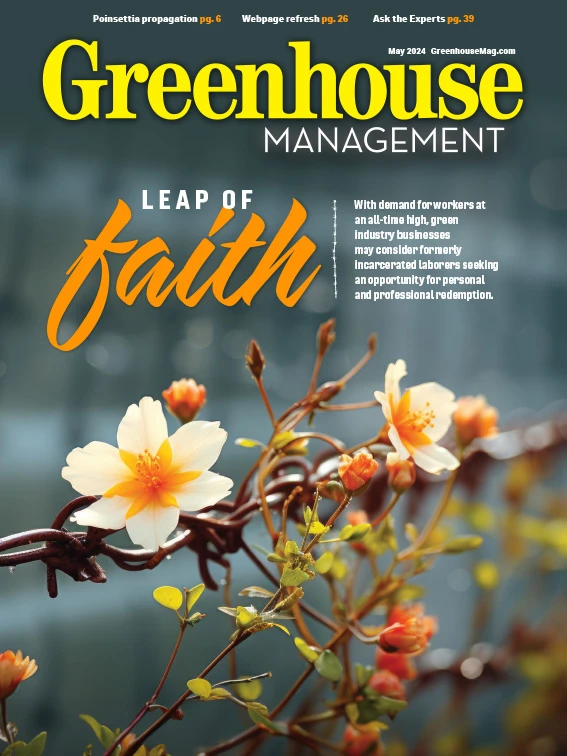
With the right amount of supplemental light, a grower can expand their growing season, growing 24/7 or, in some cases, speed up production time.
There is a catch: Using supplemental lighting is not as simple as buying fixtures, installing them in the greenhouse and then reaping the rewards a few weeks later. With lighting, growers need to be mindful of how much light is actually being absorbed and how effective it is. To do that, they need to measure the light, most commonly with a light meter and/or light sensors.
“You’re not going to be able to calculate your daily light integral [with a handheld light meter], but it’s a good way of going into your greenhouse and seeing what the light intensity is when it’s bright outside or what the light intensity is when it’s cloudy,” says Roberto Lopez, an assistant professor at Michigan State University specializing in controlled environment specialty crop production. “Obviously, it’s going to vary from day-to-day and from one season to the other. But at least it’s going to give you kind of a snapshot of what your light levels are and whether you should be using supplemental lighting or whether you should be using your shade curtains.”
Light measurement options
There are a number of light meter options available, ranging in cost from a few hundred dollars to more than $1,000. In Lopez’s opinion, there is one type of light meter growers should invest in because it gives an extra layer of information that other options do not.
“Having a light meter is important, but having a quantum meter is even more important,” he says. “A quantum meter is basically measuring the light that a plant perceives in the photosynthetic radiation, and that’s what we’re most concerned with — [is it] the light the plant is using for photosynthesis? If you have a foot candle meter, it is basically just measuring the light that we can see as humans, and that’s not what we are concerned with in this particular situation.”
Additionally, Lopez says that light meters must be calibrated with the type of lights a grower is using to give the grower the most accurate readings possible. For example: If a grower has LED lights but uses a light meter calibrated for high-pressure sodium bulbs, their readings are going to be incorrect.
“It most instances, it’s going to be lower than what you are actually measuring,” Lopez says. “Or, in other instances, it could be higher. Unfortunately, the cost is going be higher for these quantum sensors, but if you want to have accurate readings, you have to pay the price.”
Best practices
Lopez says light meters are vital for growers who have invested in supplemental lighting. Meters can also help inform future decisions about whether to add more lighting.
“Being able to go in at night when those lights are on and take your own measurements is quite important. Being able to determine what light intensity your lights are putting out, then you can use that to calculate your DLI and determine whether that light intensity is sufficient or if you’ll need to add more lights,” he adds.
And the ability to properly measure light is important for smaller greenhouse operations — even though they may only have a few light fixtures in the greenhouse. Growers who don’t know their light levels are at a disadvantage.
Lopez recommends taking measurements “as often as you can” — once a week at minimum, especially if the greenhouse is not fitted with an automated environmental control system that manages the lights — and recording the readings. From there, a grower can determine if the lights are aiding plant growth or not — and what the next step should be.

Explore the May 2024 Issue
Check out more from this issue and find your next story to read.
Latest from Greenhouse Management
- The Growth Industry Episode 3: Across the Pond with Neville Stein
- Trends: Proven Winners 2025 perennial survey shows strong demand
- Online registration opens for the 2025 Farwest Show
- Green Gear: Battery-powered backpack sprayer and a hoodie
- Sustainabloom launches Wholesale Nickel Program to support floriculture sustainability
- Be the source
- pH Helpers
- Society of American Florists accepting entries for 2025 Marketer of the Year Contest






